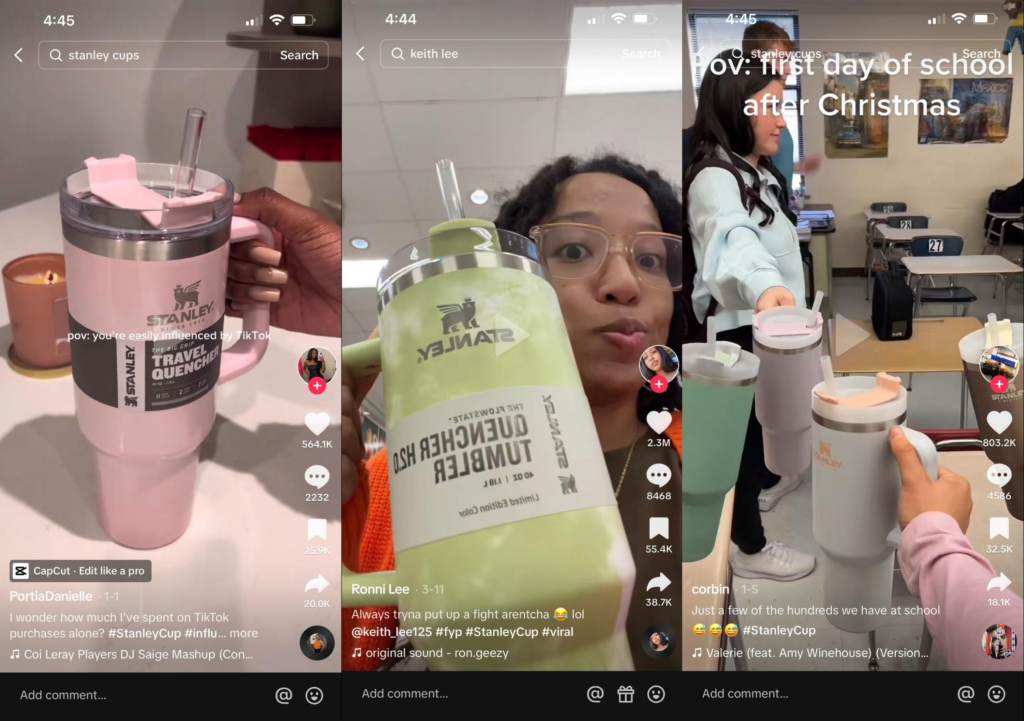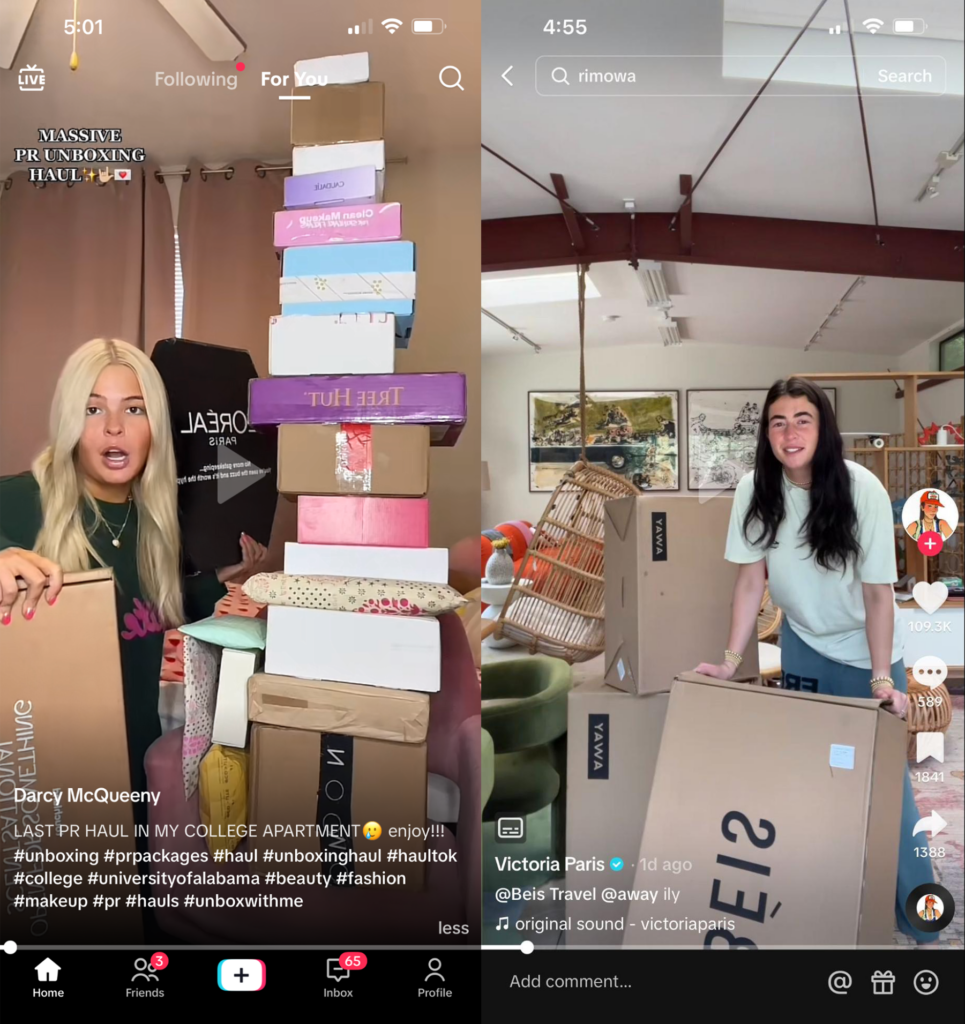Rebecca Yi is the head of influencer marketing at Acadia.
Influencers are a powerful partner. They promote products and brands on social media in a way that the brands themselves can’t, and they’ve built the trust of an audience who takes their recommendations seriously. The right influencer testimonial could mean a viral marketing moment. At least that’s the hope – it’s not always easy to track what’s working when it comes to influencer marketing.
On a recent episode of the E-commerce Braintrust podcast, Kasey Kiser, senior consultant of PPC, social media and SEO strategy and insights at Acadia and I discussed how brands can measure the efficacy of influencer partnerships, how to navigate paying and gifting influencers, and the tools that can be used to make the most of these dollars spent to ensure they’re striking the right chord. (You can stream the episode here.)
“How do you know it’s working? How do you measure success?” These are the top questions brands ask me when talking about influencer marketing. Companies – especially those leading influencer efforts across social teams – need to have proof to show that this is money and energy well spent, but the relative newness of the field, the platform sprawl, and the indirect conversions make it difficult to find that proof. But there are a few solid ways to find out what’s working.
Start with a clear goal or objective in mind.
The best way to set an influencer campaign up for success is to know what you want to get out of it from the start.. Setting that objective early will determine the shape of your influencer campaign strategy. For example, the main KPI might be increasing brand awareness, meaning brands should be watching metrics like follower count, reach, and impressions to see if the campaign is garnering attention online. Or you might be looking for consideration, which can be best tracked through engagement including like counts, comments (which offer both qualitative insight as well as quantitative interaction) and how many times a post was saved or bookmarked. If conversion is the goal, include call to actions around app downloads and sign-ups, and set the influencer up with an affiliate link or a promo code and track the number of clicks and sales tied to both. All of this should paint a picture on the immediate call to action an influencer campaign is driving.

Trust the process.
Influencers feel like your friend in a way that many brands don’t; that’s why they’re valuable partners. When a follower sees an influencer recommending a product, they may not jump to buy something right away, but the seed has been planted. The influencer has granted the brand credibility, and now they may be more likely to choose the brand the next time it comes up. Think of it like a shortcut. The marketing “Rule of Seven” says that any prospective customer needs to encounter a brand or advertiser’s message at least seven times before they buy. When an influencer gives their thumbs-up, that can cut that down to half. On TikTok, a product may sell out entirely from just one viral video. That’s the power of influencer marketing. When they recommend something, their audience trusts them and believes in it.

Source: TikTok
Don’t make virality the goal.
While some marketers strike gold with a viral video, virality isn’t sustainable and brands shouldn’t go into an influencer marketing campaign banking on one post going viral. Influencers should be thought of as their own channel that’s a must-have tool in a marketers’ belt alongside a brand’s Instagram page and SEO. A good owned social strategy is about consistently building a community, and influencers are one piece of that.
Influencers are always evolving – adjust expectations accordingly.
Not all influencers are the same, with the ability to deliver the same results, and what that means is always changing. First it was different tiers of influencers – from micro to macro depending on follower count – and now there’s a separation between content creators and social media personalities. Part of the reason behind that is the accessibility of video editing tools like CapCut, a top downloaded free app that has made it easier for anyone to start making and posting videos, mainly TikToks and Reels. Now that the average person has the keys to creating UGC, and TikTok algorithms make it easier to get reach, who is an influencer? The pool is expanding, while also becoming more diverse and with more niches. That gives brands more options when it comes to who to work with.
Strategize your gifting.
Gifting can seem like the easiest gateway to working with influencers – there are no contracts involved, and no paid social behind it. However, that also means there’s also a risk that gifts will go out with no content to show for it. That means brands need to be strategic to who and what they are gifting. Gifting should be authentic and intentional. Don’t just spray and pray, and mass send out a gift without doing your research on whether it is the right fit for the influencer. Seek out who might resonate with your product and send them your product – it is received especially well if they’ve used the product in a video before organically. The last thing you want is for your gifts to end up on a resale website. Just be sure to manage expectations as well, and don’t ask for the world in return.

Source: TikTok
Let the influencer be themselves.
Brands may want to control every aspect of an influencer post that they’re paying for, but this is a mistake. It hurts the brand and the influencer when customers can smell out a paid, scripted ad spot. Trust that the influencer knows what will work best on their channel. This also applies to influencer trips – brands that host them should understand that influencers will be bringing their whole self on the trip, and that often means bringing the other products they use. But the community building that comes from that is effective in establishing a roster of partners and elevating the brand online with so many creators in one place.
The bottom line: be intentional.
Understand what you want to get out of each post so that it can be backed up by KPIs. Find a strategy that works for your brand and drives results, even if it’s not easy to quantify the complete picture of the influencer’s unspoken effects. Invest in the right relationships, and that will pay off.
